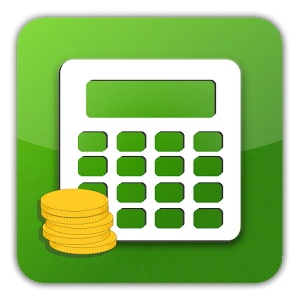Taxes in modern economies can be represented in a wide range of varieties. There may also be a large number of reasons for classifying the corresponding obligations. The tax system of the Russian Federation is characterized by a number of features related to the determination of the principles for classifying taxes to one or another category. Which of them can be called the most remarkable? How can taxes be classified?
Key tax features
Taxes are an essential element of economic management. As a rule, it is they who become the main resource of the state in the formation of the budget. Taxes can be levied on both individuals and legal entities in accordance with the provisions of the law. Their main elements:
- subject (individual or legal entity, which is obliged to pay this or that tax);
- object (tax base in the form of income or property);
- rate (statutory percentage of the property or another value that determines the amount of tax payments to the state).

There are many reasons for tax classification. Among them - the attribution of payments to solid, progressive, regressive or proportional. Consider their specifics in more detail.
Reasons for tax classification: rate types
So, tax classification may imply attributing those to those that are calculated using fixed rates, namely, they are fixed in absolute terms, as a rule, without correlation with the size of the tax base and often independently of it.
There are proportional rates. They are usually considered the most common. These rates assume the calculation of fees as a percentage of the tax base. More than object of taxation the higher, respectively, the calculated payment obligation.
Progressive rates suggest that, on the one hand, as in the previous scenario, the payer will have to pay a certain percentage of the tax base to the state, and on the other, an increase in the corresponding share as the size of the taxable object increases.
In turn, regressive rates suggest the opposite pattern - a decrease in the percentage of the base synchronously with a decrease in its value.
Tax classification can be carried out based on the method of transferring fees to the budget. We study this criterion in more detail.
Method of payment transfer: direct and indirect taxes
The considered criterion assumes the division of taxes into direct and indirect. The first include those that are paid directly by the taxpayer. As a rule, they reflect a certain economic activity, for example, generating income in the process of entrepreneurial activity. It can be noted that the concept of direct taxes was enshrined in Soviet law. Thus, the corresponding type of budgetary obligations is a phenomenon completely familiar to the Russian legal system.

Indirect taxes are those that are paid by one entity de jure, but by another de facto. An example is VAT. This tax is required to pay retailers along with other fees. But, as a rule, retailers include VAT in the cost of goods. Therefore, the actual payers of this tax are buyers. The Russian system of indirect taxes also includes excise taxes and customs duties.
Direct Tax Classification
Classification of taxes and fees can also be carried out within the framework of the basic categories that we have defined above.So, we can take a closer look at the specifics of direct payments. Their classification may involve the attribution of fees to those withheld from individuals and must be paid by legal entities. Among the taxes of the first type - property, transport, personal income tax. Fees collected from legal entities - income tax, various preferential payments (STS, UTII, on the property of the organization).
General and target taxes
Another reason for classifying fees is their classification as general or target. The first taxes include those that are sent to the state budget and are used as a resource to finance general expenses. Special taxes imply the use of a national economy in a particular industry.
Tax rate
Tax classification in the Russian Federation can be carried out on the basis of assigning the fee to one or another level (federal, regional or local).
The first include payment obligations, which are established by legal acts adopted by the highest authorities of the Russian Federation. Federal taxes include personal income tax, VAT, income tax, on trading, customs duties.
Regional fees are set at the level of legal acts adopted in the constituent entities of the Russian Federation. Among the relevant payment obligations is a tax on the property of organizations for the extraction of minerals.
Local fees - those that are established at the level of municipalities of the Russian Federation. Among the relevant payment obligations are land tax, property tax for individuals.
A little later we will examine the specifics of federal, local, as well as municipal payment fees in more detail.
Taxation concept
Tax classification can be carried out based on the principles of the formation of payment obligations of taxpayers to the state.
So, in the economic system, a concept can be adopted according to which tax entities will have to pay taxes to the budget in proportion to the key benefits received from the state or society. That is, those citizens and organizations that receive the greatest benefit should fulfill obligations in order to formulate the noted benefits. For example, if entrepreneurs want to use the opportunities to export their products, then they should be interested in the stable functioning of the necessary state institutions. Therefore, they need to deduct taxes in sufficient amounts in order for the relevant structures to work.

Another concept assumes that taxpayers transfer fees to the budget in correlation with the actual amount of revenue received. A similar approach is quite common in the world. It is largely involved in the Russian tax system. The tax classification in question may include various additional criteria. For example, the legislator may emphasize the collection of payments on a wide range of grounds or, conversely, identify several key tax items.
Proponents of tax diversification, which is implemented as part of the first scenario, believe that such an approach can increase the stability of the economy, guarantee the stability of budget revenues in the event of crisis trends in individual sectors. In turn, those researchers who believe that it is better to identify several basic sources of budget revenues argue their point of view with easier ways of administering such a taxation system, as well as with the availability of more legislative regulation of the collection of necessary payments.
Above, we noted how widespread tax classification is in the Russian Federation, based on their classification as federal, regional or municipal. We study their specifics in more detail.
Federal taxes
These fees are subject to calculation and payment throughout Russia.They are established and regulated by federal legislation, according to a number of estimates, they are key from the point of view of generating budget revenues of the country, they largely determine the stability of the economy, they are a significant resource for supporting regional and local budgets through subsidies, subventions and other financing mechanisms. Federal taxes and fees include:
- VAT;
- excise taxes;
- income tax;
- Personal income tax;
- contributions to government funds;
- duties;
- subsoil use tax;
- tax on the use of biological resources;
- forest, water taxes;
- licensing fees.

Note that the list of federal taxes, such as those that are presented at other levels, can be periodically adjusted by regulatory legislation.
Regional taxes
The tax classification adopted in Russia includes regional payments. Many of them are payable throughout the Russian Federation. The authorities in the constituent entities of the Russian Federation are regulated only by some of the characteristics of the corresponding fees, for example, rates, benefits, as well as the procedure for charging the budget. The main regional taxes in the Russian Federation:
- transport;
- corporate property tax;
- gambling tax;
- licensing fees of constituent entities of the Russian Federation.
The establishment of regional taxes is carried out, as we noted above, by the authorities of the constituent entities of the Russian Federation, but subject to the provisions contained in the Tax Code. The current criteria, which are included in the noted federal source of law, suggest that regional authorities can adjust the rates, procedure and deadlines for fulfilling payment obligations, if they are not established in the Tax Code.
Local taxes
The next level of taxation in the Russian Federation is local. Pay the appropriate fees should taxpayers in municipalities: cities, districts, rural settlements. Among local taxes: land, property of individuals. The authority to establish criteria for appropriate payments is established by law in relation to various municipalities.
As for urban districts, including internal administrative structures, the powers of representative bodies related to the establishment, activation or termination of activities of municipal structures can be exercised by the city authorities or those structures in accordance with the provisions of the legislation of the subject of the Russian Federation, which fixes the separation of powers between city districts and areas within them.
AT cities of federal significance Local payments of the Russian Federation, which involves the widespread classification of taxes and fees in the Russian Federation, are established by the Tax Code of the Russian Federation, as well as legal acts adopted by the authorities of the relevant settlements. Regarding the powers of political structures in cities of federal significance: they consist in the ability to regulate, as in the case of regional taxes, the rates, procedure and terms for transferring the corresponding fees, if these criteria are not spelled out in the Tax Code.

Another group of powers of authorities in cities of federal significance is the establishment of the specifics of determining the tax base, as well as benefits.
Federal, regional or local taxes that are not provided for by the Tax Code of the Russian Federation cannot be applied in Russia. The provisions of the Tax Code may also fix special tax regimes providing for additional federal payments, as well as the procedure for establishing appropriate fees. Relevant tax regimes may include exemption from payment obligations of entities that pay general federal, regional or local taxes to the treasury.
Special modes
The criteria for tax classification contained in the legislation of the Russian Federation suggest the allocation of a separate category of payment obligations in the form of special regimes. We examine their specifics in more detail. Special tax regimes recorded in the provisions of the Tax Code of the Russian Federation and applied in the manner prescribed by this source of law and other laws governing taxes and fees. Among the modes in question:
- USHN, or a taxation system adapted for agricultural businesses;
- USN - a simplified system for calculating and paying fees;
- UTII - the system of payment of imputed income;
- patent scheme;
- tax system accompanying production sharing agreements.
Above, we noted that the principles of tax classification may imply the allocation of additional criteria for classifying payments into one or another category. So, for example, the simplified tax system is of two types - one that involves paying the state tax on revenue at a rate of 6%, as well as one in which taxpayers transfer 15% of the profit to the budget.

The types of taxes stipulated by the legislation of the Russian Federation and their classification in some cases may imply a pronounced refinement of the criteria for calculating payments. For example, the UTII calculus formula involves the involvement of several components at once - the basic profitability, physical indicator, and various coefficients. In fact, we can talk about the presence in the tax system of the Russian Federation of several dozen single taxes on imputed income, based on various combinations of these elements.
Tax components
The classification of local taxes, as well as regional and federal, can be based on the components that form the payment. These are:
- object of taxation;
- the tax base;
- period;
- rate;
- payment calculation procedure;
- deadlines for paying tax to the budget.
It can be noted that these components are fixed in law.
Object classification
Classification of taxes by objects is widespread, which are, as we noted at the beginning of the article, components of payments to the state budget. There can be quite a lot of reasons for assigning fees to certain categories within the framework of the criterion under consideration. Such may be, for example, the level of the authority approving the rate or the procedure for calculating the payment.
The practical utility of tax classification
The types of taxes considered by us and their classification are of paramount importance, first of all, from the point of view of building a state budget formation strategy. The authorities of the Russian Federation can provide for the calculation and allocation of fees to the budget at once at three levels that correlate with the public administration system. Such a scheme, according to many researchers, is one of the most optimal for Russia. In this regard, the Tax Code and the tax classification in accordance with it are of extremely important importance.
Payments to the budget, assigned to one or another category, are also of great scientific importance. Law as a science involves the development of theories that explain the functioning of the norms of laws, including those that regulate payments to the budget, as well as determining the optimal schemes for their practical application. Relevant knowledge can also be of great importance in building a state policy of economic development.
Summary
We examined on what grounds tax classification can be implemented. The concept of direct tax and indirect was also described in our article. Now let's try to summarize the key facts that we have studied.

So, payment obligations to the budget can be carried by both individuals and organizations. Among the basic grounds for tax classification is the classification of such taxes as direct or indirect. The legal system of the Russian Federation adopted the principle of the distribution of fees into 3 main categories - federal, regional, and local.
In some cases, taxes can be classified based on the specifics of their constituent elements.
It is possible to distinguish additional categories of fees by detailing them on the basis of certain signs (as is the case with UTII). If we are talking about some basic features that may be the basis of the classification, we can use the simplified tax system as an example. In this case, there are 2 categories of this tax - paid, as we noted above, at a rate of 6% of revenue or calculated at a rate of 15% of taxpayer profit.








